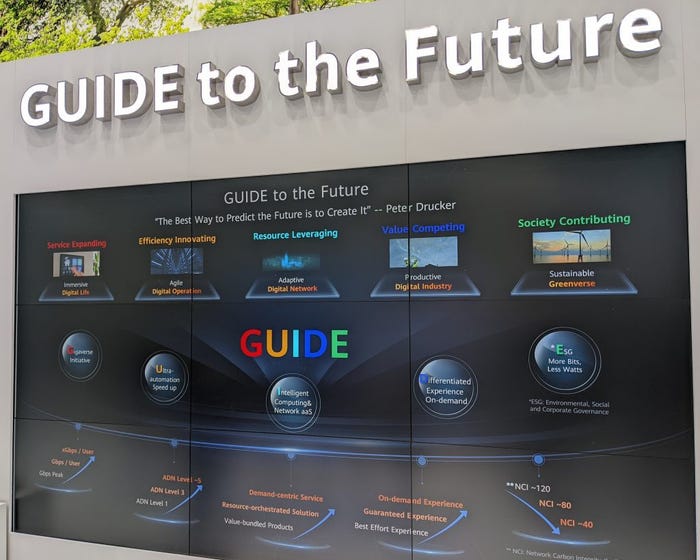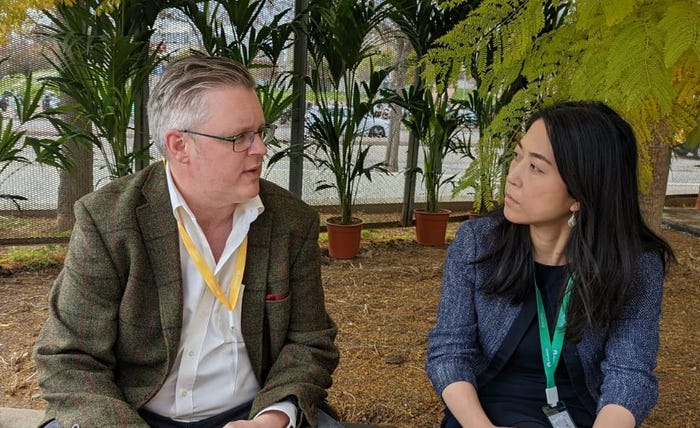Huawei seeks to guide itself away from US sabotage at MWC 2022Huawei seeks to guide itself away from US sabotage at MWC 2022
Chinese telecoms vendor Huawei has spared no expense at Mobile World Congress 2022 to show it is unbowed by US sanctions and determined to evolve away from them.
March 1, 2022

Chinese telecoms vendor Huawei has spared no expense at Mobile World Congress 2022 to show it is unbowed by US sanctions and determined to evolve away from them.
Chatting to Huawei execs at the show we got a sense of calm resolve to ensure the company is able to survive and thrive despite everything. It’s likely we’ll never know what dirt the US and its allies have on the company, but until they dish it we will treat Huawei like any other vendor. And if this year’s show is anything to go by, it’s here to stay.
Traditionally Huawei and Ericsson have the biggest stands at MWC, taking up the back of halls one and two, respectively. That was the case again this year but, while Ericsson’s stand was deliberately understated, Huawei’s was the over-populated hive of activity it always has been. While we don’t necessarily celebrate that for our own purposes – the chaos can be trying – it certainly serves to create the impression of business as usual.
While much of the Huawei stand was devoted to the kinds of networking acana you would expect, adaptation and diversification were also major themes. The company spent the whole of Sunday hosting partners and analysts at the opulent W hotel, with no expense apparently spared, during which it launched its ‘GUIDE business blueprint,’ which it hopes operators will adopt in order to ‘create a better digital economy together’.
It is, of course, one of those forced acronyms strategy types seem so fond of, but it’s also an attempt to crystalize Huawei’s cunning plan for the digital economy. ‘During his keynote, Ding explained that the vitality of digital economy can be evaluated by three factors: connection density, computing diversity, and carbon reduction intensity, and that these factors give operators the levers they need to shape the future of the digital economy,’ said the associated press release. Here’s the summarizing slide from the Huawei stand.

We spoke to Yao Wenbing, Huawei’s UK VP of Business Development and Partnerships (pictured below in the garden at the back of the Huawei area). In the context of admitting “the company is trying to survive,” she was keen to highlight one of the business areas Huawei is focusing on in it’s bid to be less dependent on the areas most affected by US sanctions.

Building on a legacy power inverter business, Huawei has a unit devoted to ‘digital power’, by which it means the special power requirements of communications infrastructure and, more generally, the modern world. So as well as working directly with operators which, for this product area, is presumably allowed under the sanctions, Huawei is also getting involved with things like fast chargers for electric cars, power supplies for datacentres and solar power.
Today Huawei’s Guo Ping issued another announcement detailing Huawei’s diversification strategy. The company’s theme at this year’s show is ‘lighting up the future’. We’re still not sure what that means but maybe the power angle is in there somewhere. Guo identified two key areas of Huawei’s strategy: digitalization and carbon neutrality.
You may be thinking there’s nothing new there, but Huawei thinks there are opportunities in setting the technological agenda in those two areas. “Connectivity density and computing power determine the strength of the digital economy, but it should also maintain long-term vitality,” said Guo. “So, we need to consider a new dimension, carbon reduction… Huawei will continue its globalization strategy, in standards, talent, supply chain, and more. Huawei is committed to helping customers who choose it to achieve the greatest business success.”
On the whole we would characterize Huawei’s presence at MWC 2022 as quietly defiant, as if to say it has taken America’s best shot and it’s still standing. This is also in keeping with the broader feel of the show, in which people seem to be relieved at the return to (relatively) normal and genuinely excited by the opportunity to socialise with colleagues and business contacts for possibly the first time in three years.
About the Author
You May Also Like










.png?width=300&auto=webp&quality=80&disable=upscale)


_1.jpg?width=300&auto=webp&quality=80&disable=upscale)